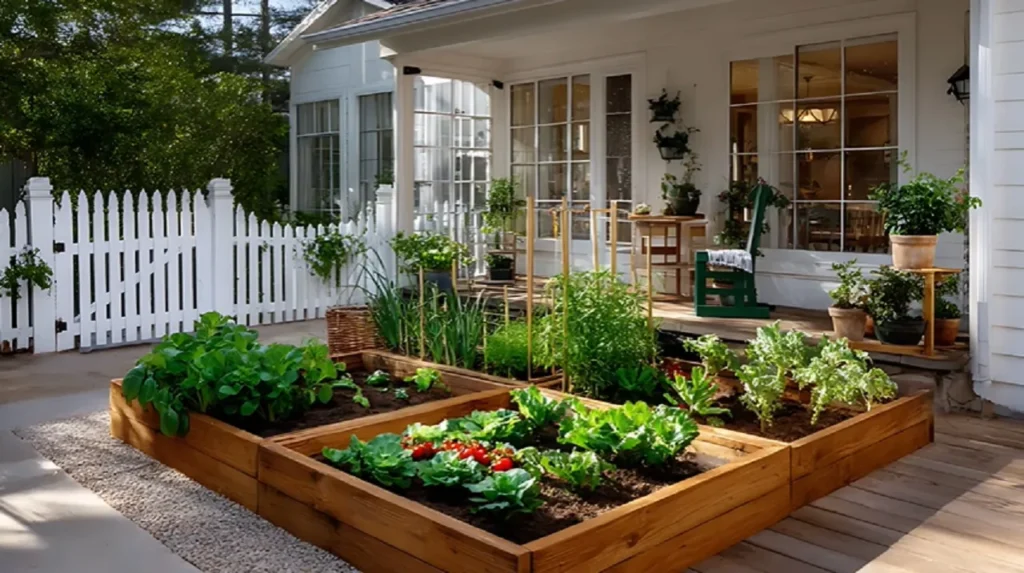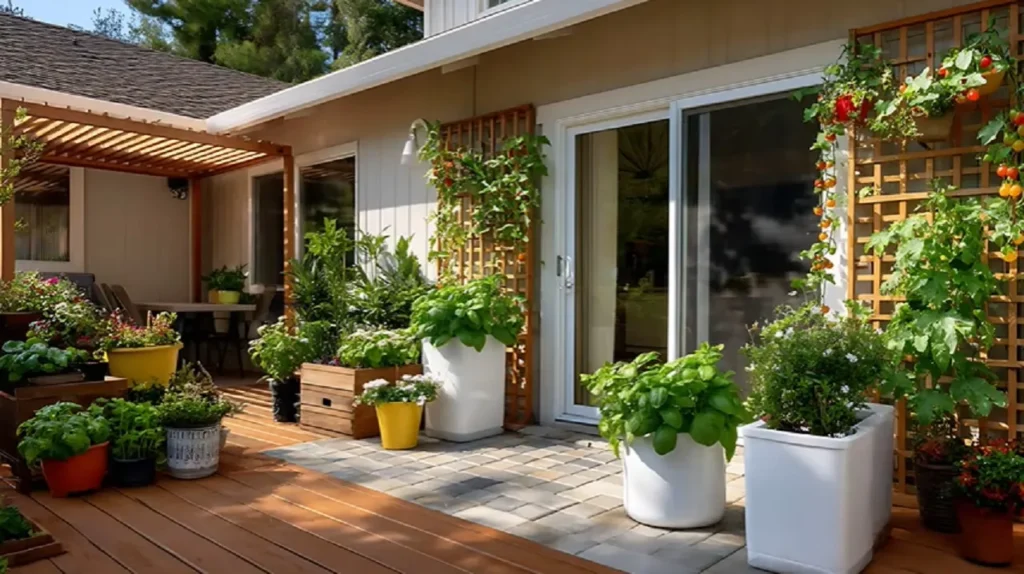Looking for small vegetable garden layout ideas? Maximize your limited space with these five incredible tips for gardening in tiny areas, including how to effectively cram plants, utilize vertical gardening, and select the right grow bags.
I modeled my raised bed garden after the original Epic Garden. It was much smaller. It brings us to the first tip, which is called cramming. This means cramming your design and also cramming plants into that design. Let’s imagine a much smaller space.
Cramming Your Garden
This space is great. It’s about 30 inches or so. But if cramming and trying to get stuff in, the bed is brought in at least halfway more. It can probably be brought in. Back in the day, there was about a foot spacing between all of the raised beds. Then the vegetable garden containers were put into that spacing. It worked at the time.
Was it the most convenient? No. But did it allow to grow about 50 or 60 percent more plants? Yes. Speaking of, you want to be looking in your beds and breaking some of the classic spacing rules.
For example, this bed isn’t really planted out very much just yet. Take a look at this lettuce. This is a pretty standard lettuce spacing. It’s about every four or five inches or so. If you’re in a small space, every square foot really, really matters. So what should be done here is say, okay, there’s lettuce here. Then go lettuce, lettuce, lettuce, lettuce, lettuce on this triangular style spacing and just go real really intensive with it.
Be a little bit more intentional about how those are being harvested so that you can make sure they’re not really running into one another. So it’s a little bit more of an intensive management process, but it totally works. This space can be compressed into about 50 percent of the space with a little bit of sacrifice on just the annoyance of dealing with it. But hey, at least you can grow.

The Magic of Growing Vertically
Tip number two is extra spicy. Vertical garden ideas is the perfect method to maximize your food production in a small space. Over the years, different vertical gardens were built using plastic bottles. It helped to create another layer of growing plants above the garden. Just make sure that you select hdp2 plastic, which is the safest plastic to use in the garden. But you can also build your own vertical trellis with a bit of DIY. It is easy with a few materials you can start growing your plants vertically.
Alternately, you can use bamboo to build a structure for peas or beans by simply placing them in a circle and then join them together at the top. This is called a TP, and it’s a super easy and effective system for a small space.
Using Grow Bags
Grow bags are a small space gardening essential. You have to have these. They were used extensively when there was a small space, and in fact, they are loved so much. So, this is how I like to use them if you’re in a tighter quarter, but this is the magic. You’ve got the handles; you can move it around. Back in the old days, these would be slotted into random spots in the garden wherever there was a gap, sometimes even putting them on top of the raised beds.
For a crop, let’s say like potatoes or onions or something where you’re planting it, you’re waiting for that growth to come up. It doesn’t even need to be in sun thus, it doesn’t even need to be in the garden. These can be kept in the garage or the backyard while planting out potatoes. Then they’d be moved into the garden the second that they actually needed a light. This allows you to grow something else in a grow bag in that space before the potatoes needed to come out. Because they’re so portable, you can move them around.
When this space was first moved into, this place was desolate. There was nothing whatsoever except for an old shed and a non-productive tree right where you see this greenhouse. So what was done is some quick landscape fabric was laid down and a grow bag garden was put in place. In about a 10 by 10 square foot area, there were 25 grow bags, so you can grow a ton in these little guys.
The Benefits of Comfrey
This plant is called comfrey, and it’s the absolute golden ticket for every organic Gardener. It produces flowers which attracts pollinators, but also the wide leaves shade the soil protecting the soil biology. It has a long top root which withdraws the minerals down deep into the ground in a bioavailable form for your plants. So you can simply chop it down into pieces is added into an old sock and submerge this sock into a tank of water. Then you can use that water to water your garden and have a completely free source of fertilizer.
Alternatively, you can add it straight into your raised beds so it will slowly decompose and provide food for your plants. You can also use it in a sort of tea infused solution to reactivate your compost because it’s full of nitrogen. You can place it around your plants, so chop and drop as is normally cold and it will create a barrier against slugs and snails. So if you’re limited on Space, growing this one plant will give you a wide variety of uses in your garden.

Choosing the Right Plants
One of the best things about gardening is that you can grow hundreds of plants, hundreds of different types of plants. For the same plant, like tomatoes, there’s probably four thousand different varieties. So if you’re a small space grower, there is a variety for you. Pro tip is look for anything that says base in the name, anything that has the word patio in the name. There are a ton of these varieties for small space Growers.
Back in the day, I used to have a west facing balcony. It was okay, it wasn’t great. There was a railing planter and patio baby or patio choice would be put in. If it was a cucumber, space master would be used. All of those allow you to grow one of your favorite crops without having it trawling all over the place and just making an absolute mess. Speaking of, there are some crops you might want to avoid.
Corn in a really small space is kind of difficult. You have to plant it in blocks. It’s been done in grow bags, but again, a little bit more of an advanced technique. Huge pumpkins, huge squash, absolutely massive indeterminate tomatoes: stay away from those and go for some smaller varieties.